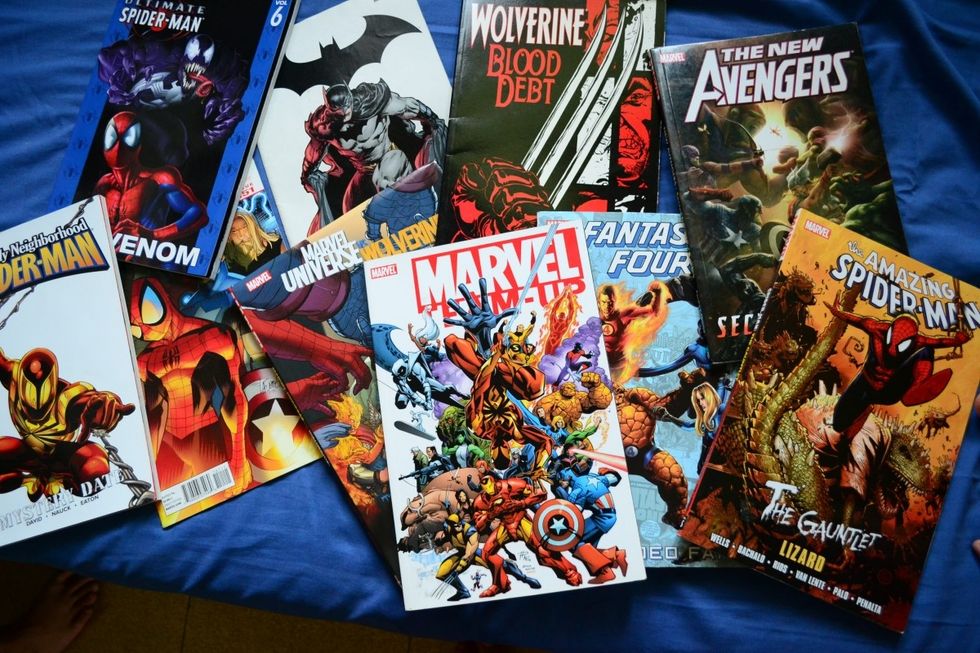Shadows.
Stern faces talking about dire, complex situations.
Grotesque screams as guns and lightsabers ripped people apart.
This was my first impression of comic books, back when I got my first one in the early 2000’s.
It was a 2004 issue of “Star Wars Tales,” which means I must have been 8 years old at the time.
Living in a smallish town in Germany, I didn’t have the same access many American kids have to comics.
But I had a lot of quasi-big brothers, U.S. Air Force guys my parents worked with. They occasionally indulged me with comic books they bought on their air bases.
These presents delighted me. And confused me.
On the one hand, I learned to love the comic book format and Star Wars.
Even today, it’s hard to think how I feel about the Star Wars prequels without thinking about the “Empire” and “Star Wars Tales” comics that introduced me to that universe.
On the other hand, I never fully understood most of those comic books.
I eventually started checking out comics from the library, and transferred from reading mostly Star Wars comics to reading DC and Marvel stuff.
I found these comics a little easier to understand, but everything still seemed dark and weird.
“Man of Steel” comics had creepy villains with motivations I couldn’t understand.
“Batman” comics had hookers and street gangs, topics I didn’t understand at the time.
The first Spider-Man comic I read featured what appeared to be someone getting consumed by spiders.
None of these stories were necessarily disturbing, but they were certainly written for teenagers and therefore hard for 8-year-old me to understand.
The moment I really started understanding comics came some years later, after my family moved back to the States.
I was browsing my new library and discovered a brick-sized book of reprinted Batman comics from the 1960’s. Dramatic, but not grimy. Suspenseful, but never graphic. Somewhat simpler characters. In short, 11-year-old me loved them and I become a full-fledged comics fan.
I returned to mature stories and complex characters when I got older, especially “Watchman” and the Sandman series.
But the period I truly fell in love with comics was filled with PG-only comics.
Reprinted Spider-Man and Batman comics from the 1960’s, E.C. Segar’s Popeye comics from the 1930’s, even 1920’s comics like “Walt and Skeezix.”
None of these comics were still being printed, so I relied on library editions. The few times I entered comic books shops in that period left me feeling confused again.
In other words, I became a comic fan at a time where I wanted lighthearted stories and to get that I needed to find old comics.
Comic book companies weren’t selling comic books for pre-teens or the PG-only audience.
Research has shown me my experience wasn’t unusual.
History Channel’s 2003 documentary “Superheroes Unmasked” noted that when comic books moved from being sold at newsstands to specialty comic book stores, most of them also became products for “mature readers.”
Paul Levitz, then DC Comics’ president, stated that most comic book buyers today aren’t kids at all.
This change to older reader markets apparently goes back to the 1950’s when harsh censorship made comics excessively simple, which led to a generation of writers who wanted to push the envelope.
This generation of writers created some great stories, including classics like “Maus,” “Watchmen” and “The Dark Knight Returns.”
Eventually, gritty and edgy became the norm.
Dark Horse Comics founder Mike Richardson Dark commented in “Superheroes Unmasked” that after “The Dark Knight Returns” and “Watchmen” came out, comics stopped being innocent.
This trend leaves comics in an odd situation.
It’s now easy to find comic books which have complex stories featuring tough topics and characters that adults can appreciate.
Being a comic book fan who’s also an adult has never been easier.
Then again, being a comic book fan who’s also a child become rather hard.
It’s hard to hard to find comic books that suit you, hard to find places where it’s okay to say you don’t care for dark stories and R-rated material.
Comic books may have reached the place where young kids, traditionally the biggest group of consumers, really can’t appreciate comic books.





















